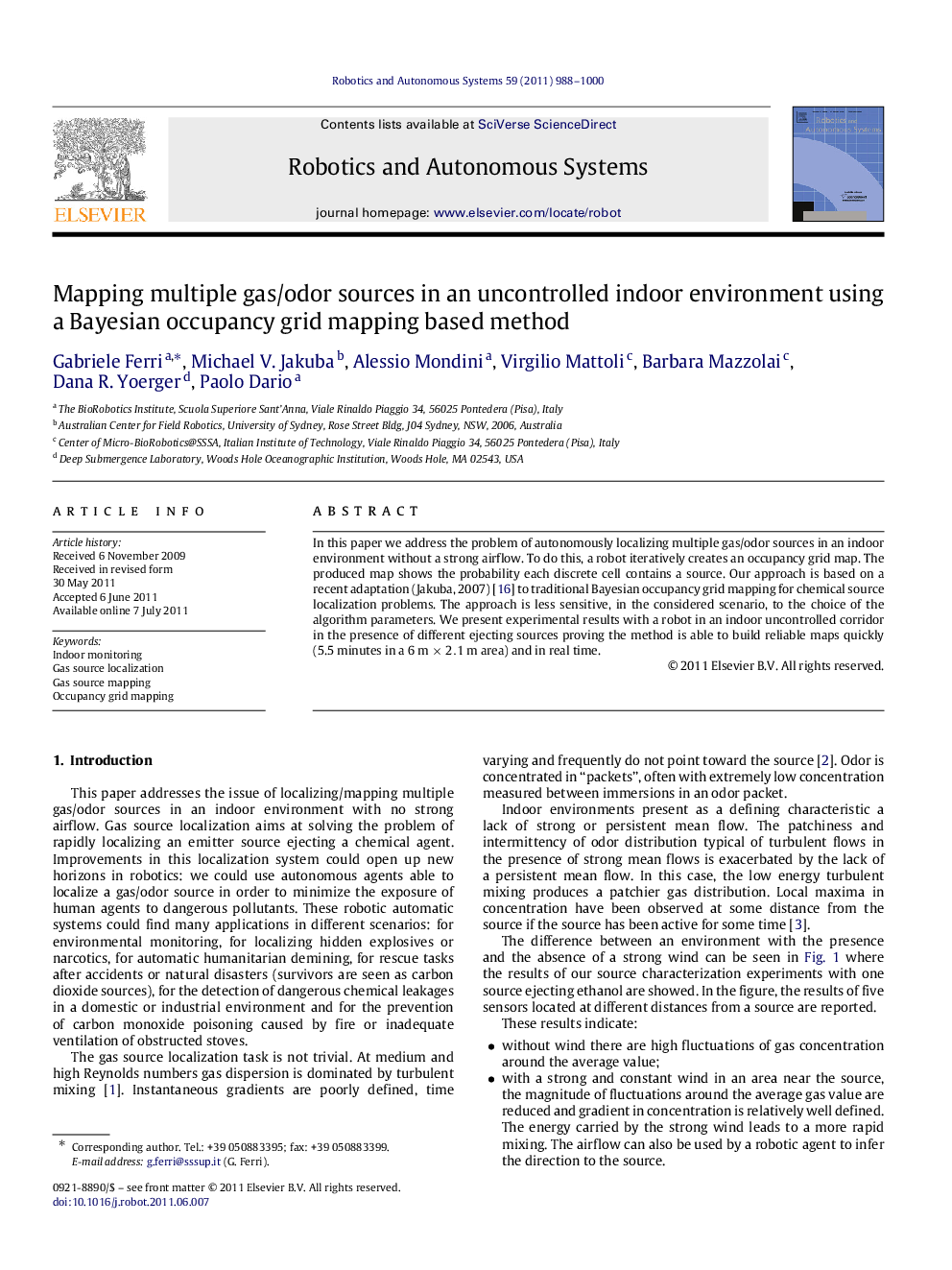| Article ID | Journal | Published Year | Pages | File Type |
|---|---|---|---|---|
| 413458 | Robotics and Autonomous Systems | 2011 | 13 Pages |
In this paper we address the problem of autonomously localizing multiple gas/odor sources in an indoor environment without a strong airflow. To do this, a robot iteratively creates an occupancy grid map. The produced map shows the probability each discrete cell contains a source. Our approach is based on a recent adaptation (Jakuba, 2007) [16] to traditional Bayesian occupancy grid mapping for chemical source localization problems. The approach is less sensitive, in the considered scenario, to the choice of the algorithm parameters. We present experimental results with a robot in an indoor uncontrolled corridor in the presence of different ejecting sources proving the method is able to build reliable maps quickly (5.5 minutes in a 6 m×2.1 m area) and in real time.
► A method to localize multiple chemical sources in an indoor scenario is described. ► The scenario is characterized by the lack of a strong airflow. ► Our method is based on an adaptation to traditional Bayesian occupancy grid mapping. ► A robot creates a map showing the probability each cell contains a source. ► Experiments show that the method is less sensitive to the choice of the algorithm parameters.
